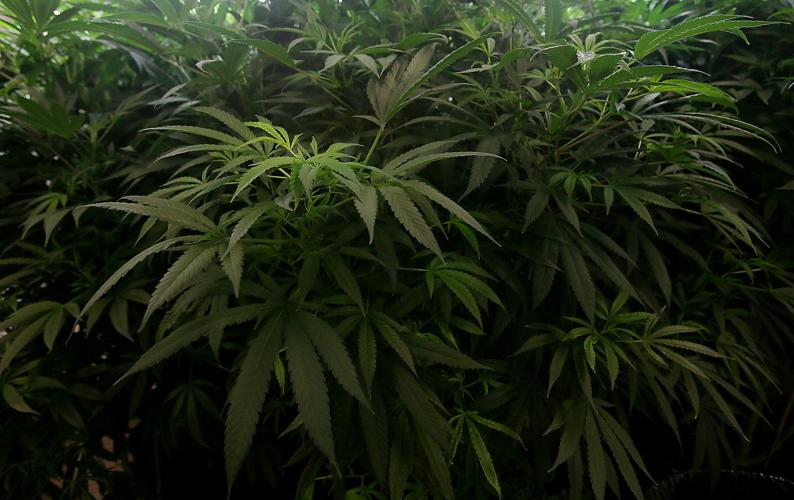PHOENIX — A pair of Arizona Supreme Court rulings Monday allows law enforcement officers to pursue a search of a person’s residence or vehicle solely based on the odor of marijuana.
Attorneys for two men convicted based on such searches argued the 2010 voter-approved law that allows some people with certain medical conditions to legally possess or use marijuana means the smell alone is no longer evidence that a crime is occurring. The fact that neither of them was a medical marijuana cardholder, the lawyers said, is irrelevant.
But Chief Justice Scott Bales, writing for the unanimous court, said that 2010 law did not legalize the drug for the vast majority of Arizonans.
“The odor of marijuana in most circumstances will warrant a reasonable person believing there is a fair probability that contraband or evidence of a crime is present,” he wrote.
And Bales specifically rejected the contention the law — and the fact some people can possess and use the drug — means the smell alone cannot trigger a search.
“Under that view, no person in Arizona would be subject to search or seizure by state or local police officers based only on an officer seeing or smelling marijuana,” the chief justice said. He said the 2010 law “does not broadly alter the legal status of marijuana but instead specifies particular rights, immunities, and obligations for qualifying patients and others, such as designated caregivers.”
And the court specifically rejected arguments that a search based merely on smell runs afoul of state and federal constitutional provisions protecting the right to privacy.
“The right to privacy ... is not a guarantee against all government searches and seizures, only unreasonable ones,” Bales explained.
That, in turn, gets back to the fact that marijuana use remains illegal for most of the public, at least for the time being.
The most recent figures from the Arizona Department of Health Services show there are close to 98,000 people legally qualified to use the drug. On top of that there are 853 people certified as “caregivers” plus another 2,625 dispensary agents.
By contrast, the state’s population exceeds 6.7 million.
“In this respect, registered qualifying patients are not denied Fourth Amendment rights or privileges based on their medical marijuana use,” Bales wrote. “They are simply treated like the broader public.”
He stressed, though, that police, in deciding whether there is enough evidence for a search, “cannot ignore indicia of AMMA-compliant marijuana possession and use that could dispel probable cause.”
David Euchner, a deputy Pima County public defender, said that is hardly enough to protect individual rights.
“How would you feel if you were the guy using legally and the police broke into your house and kicked down the door and only later found out that you had a (medical marijuana) card?” he asked. “Now, according to this decision, they basically are allowed to search first, ask questions later.”
Euchner also said the ruling would appear to allow searches based solely on smell — especially of vehicles where a warrant is unnecessary — even if voters approve a ballot measure in November to allow Arizonans to possess and use marijuana for recreational purposes.
He noted the initiative only legalizes possession of up to one ounce of the drug by individuals.
“Can the officer search first and determine whether he had the right amount?” Euchner asked.
“We’ve had situations where the officers know that the person is a (medical marijuana) patient and still say, ‘I’m going to search you just to see if you have the right amount,’ ” he said.
What’s legal now under the 2010 law is that those with certain medical conditions can obtain up to 2½ ounces of marijuana every two weeks. Those who qualify are issued special cards by the health department.
“Presentation of a valid AMMA registry identification card, therefore, could indicate that marijuana is being lawfully possessed or used,” Bales explained.
“Such information could effectively dispel the probable cause (for a search) resulting from the officer’s detection of marijuana by sight or smell, unless of course other facts suggest the use or possession is not pursuant to AMMA,” he continued.
“The ultimate inquiry, as in other probable cause determinations, turns on a practical, common-sense consideration of the totality of the circumstances,” Bales said.
And there’s something else.
Bales said the 2010 law does not provide patients with greater protections from searches or increased expectations of privacy than those enjoyed by the public at large.
What it does, he said, is protect a legitimate cardholder from arrest, prosecution or any other penalty for their medical use of marijuana.
The rulings most immediately affects two individuals.
One is Ronald J. Sisco II who was represented by Euchner. His arrest stems from police saying they smelled the “overpowering odor of fresh marijuana” at a storage warehouse on West 35th Street in South Tucson.
Based on that, they obtained a search warrant and, according to court records, found 357 plants and 53 pounds of cultivated marijuana. Sisco, who apparently was living in the unit, was convicted of multiple charges and sentenced to concurrent prison terms, the longest of which was 3½ years.
The rulings affirm the decision of the trial judge to allow the marijuana police found into evidence.
The second case involves Ian Cheatham whose vehicle was stopped by police on the suspicion that the window tinting violated Arizona law.
Officers said they noticed a “pretty strong” odor of burnt marijuana. They then searched the vehicle and found what was described as a marble-sized piece of unburnt drug under the driver’s seat.
He was placed on supervised probation for one year.





